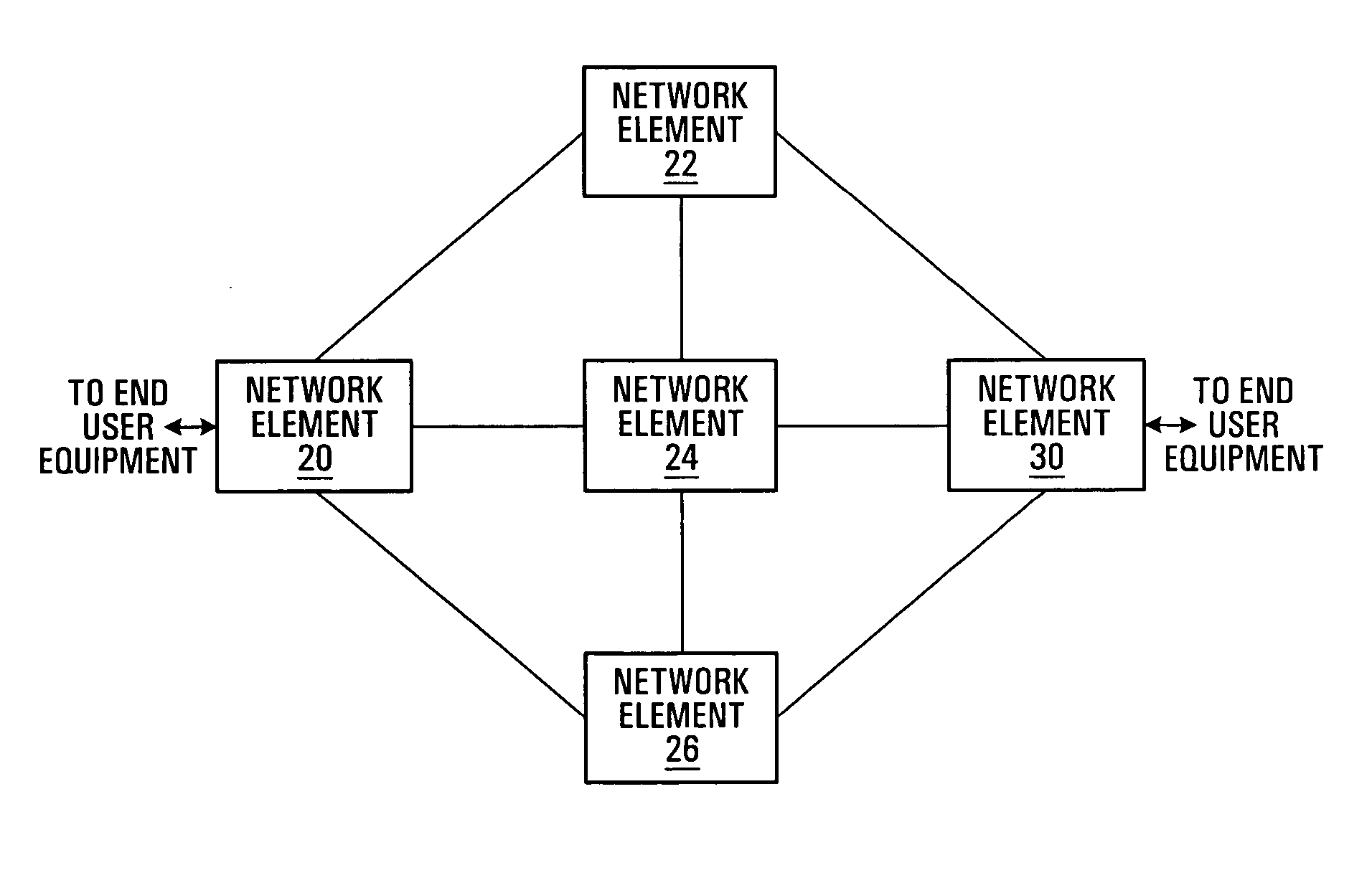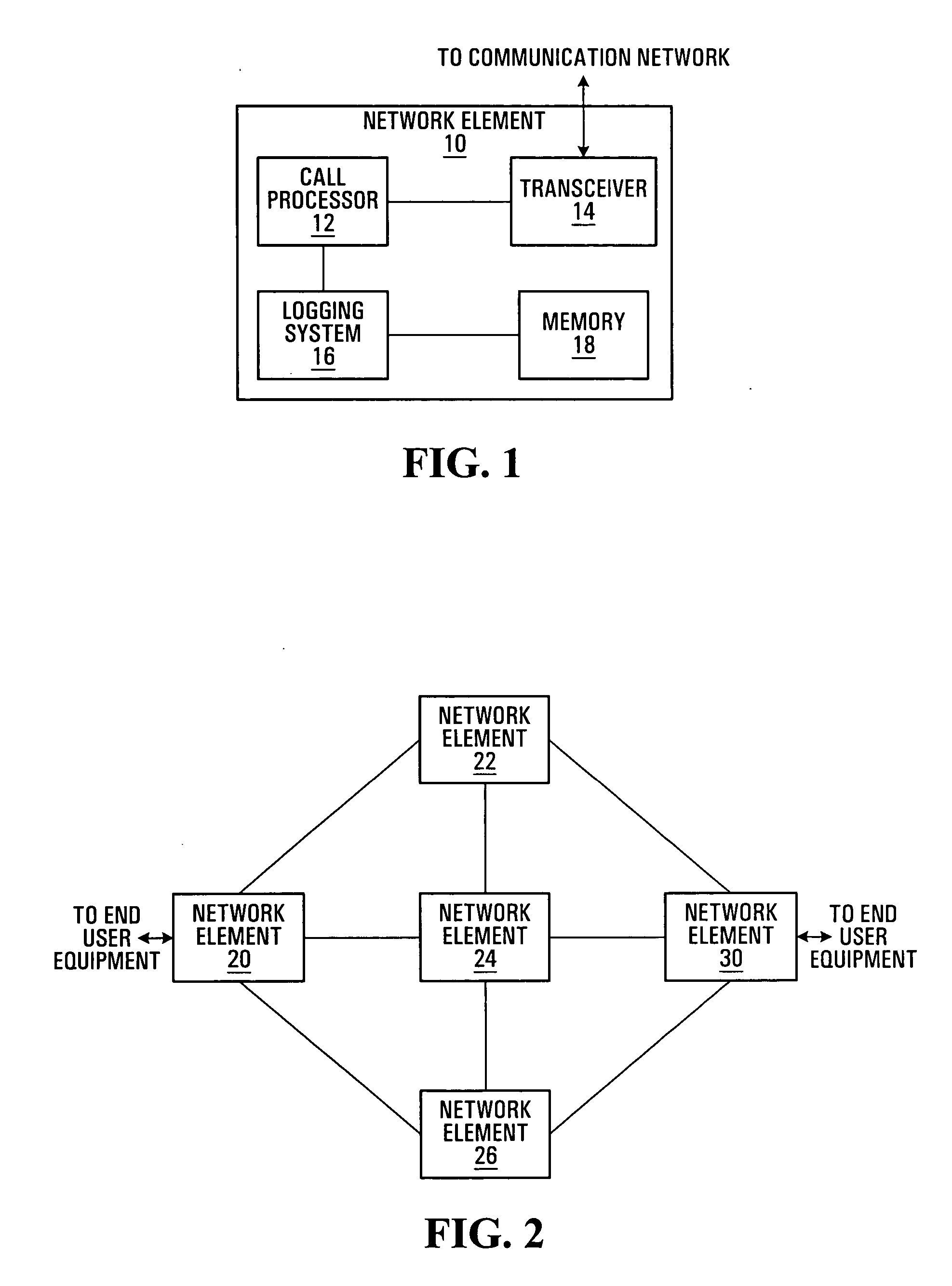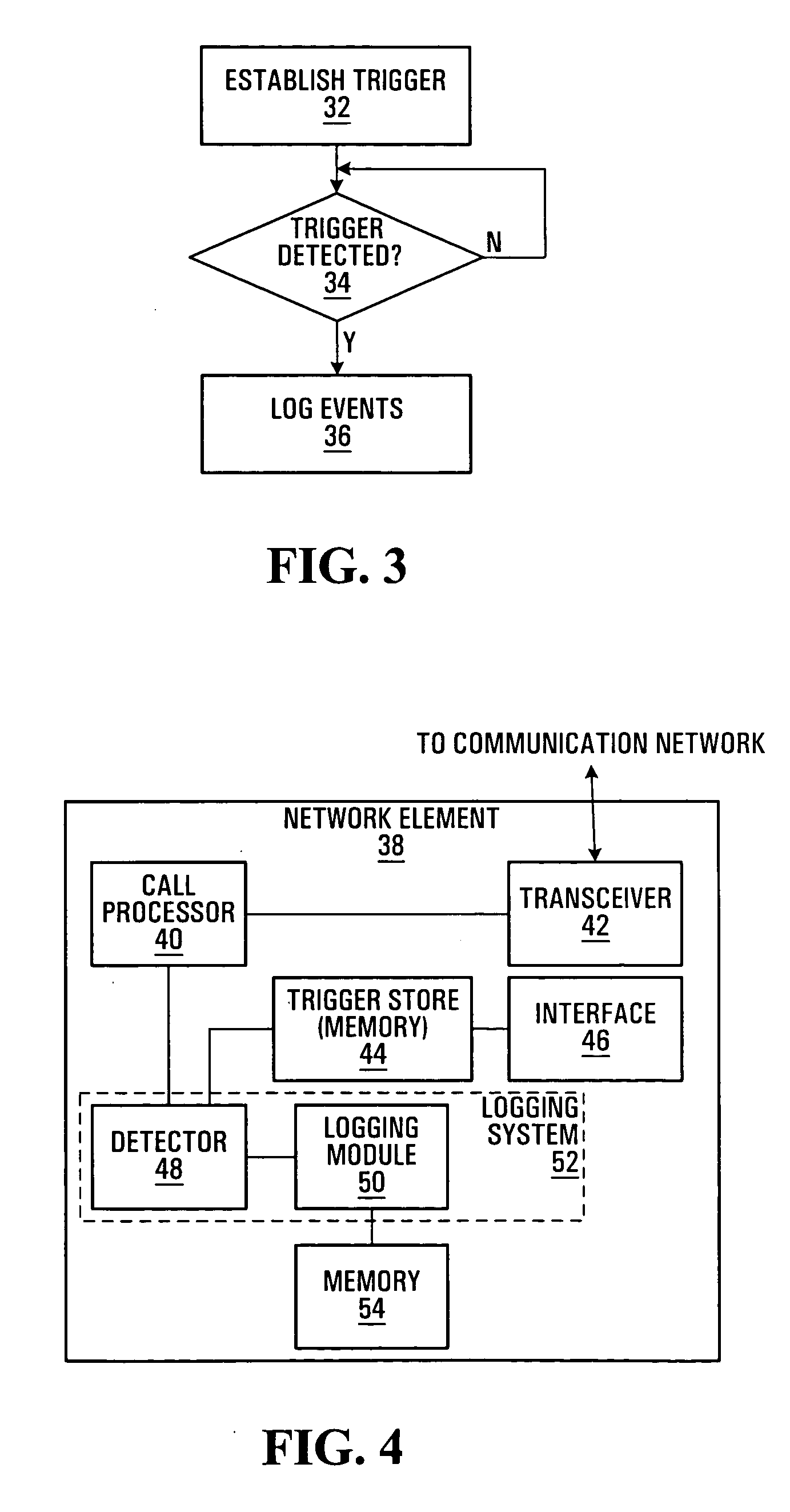Communication network event logging systems and methods
- Summary
- Abstract
- Description
- Claims
- Application Information
AI Technical Summary
Benefits of technology
Problems solved by technology
Method used
Image
Examples
Embodiment Construction
[0033]FIG. 2 is a block diagram of a communication network in which embodiments of the invention may be implemented. The communication network in FIG. 2 includes multiple network elements 20, 22, 24, 26, 30, also commonly referred to as nodes. As embodiments of the present invention are preferably implemented at network elements within a communication network, other equipment which may be provided within a communication network or operate in conjunction with a communication network, such as end user equipment, network management systems, and other user, management, or control equipment, has not been explicitly shown in FIG. 2. It should therefore be appreciated that the system of FIG. 2, as well as the contents of the other drawings, is intended solely for illustrative purposes. Embodiments of the present invention are in no way limited to any particular type of network, equipment, or communications.
[0034] The network elements 20, 22, 24, 26, 30 may be switches, routers, or analogo...
PUM
 Login to View More
Login to View More Abstract
Description
Claims
Application Information
 Login to View More
Login to View More - R&D
- Intellectual Property
- Life Sciences
- Materials
- Tech Scout
- Unparalleled Data Quality
- Higher Quality Content
- 60% Fewer Hallucinations
Browse by: Latest US Patents, China's latest patents, Technical Efficacy Thesaurus, Application Domain, Technology Topic, Popular Technical Reports.
© 2025 PatSnap. All rights reserved.Legal|Privacy policy|Modern Slavery Act Transparency Statement|Sitemap|About US| Contact US: help@patsnap.com



